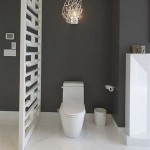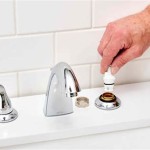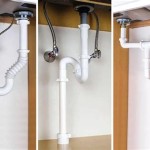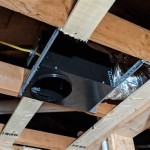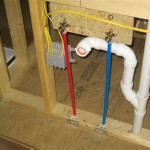Where to Put a Bathroom in the Basement
Adding a bathroom to your basement can significantly enhance the space’s functionality and value. However, strategic placement is crucial for maximizing its usability and minimizing potential complications. This article will explore various considerations for determining the ideal location for your basement bathroom.
Factors to Consider
Several factors come into play when deciding where to place a basement bathroom. These include:
- Existing Plumbing: The proximity of existing plumbing lines, especially sewer and water supply lines, will greatly influence where the bathroom can be installed. Ideally, the bathroom should be positioned near existing lines to minimize the need for extensive and costly plumbing work.
- Access to Ventilation: Proper ventilation is essential for a bathroom to prevent moisture buildup and mold growth. Consider the location of existing vents or the feasibility of installing new ones.
- Natural Light: While basement bathrooms are typically not bathed in natural light, it's still a good idea to consider the positioning of windows or the possibility of adding a skylight. This can significantly improve the aesthetic appeal and overall feel of the space.
- Space Considerations: Evaluate available space and determine if there is adequate room for all the bathroom fixtures (toilet, sink, shower/tub, etc.) and any additional features like a vanity or linen closet.
- Accessibility: If you plan to make the bathroom accessible for people with disabilities, carefully consider the location in terms of door widths, ramp accessibility, and overall space.
- Safety: Ensure the bathroom is positioned in a way that minimizes the risk of flooding. Consider the potential for leaks and the presence of any basement waterproofing systems.
Potential Bathroom Locations
Considering the factors mentioned above, here are a few common locations for placing a basement bathroom:
- Near Existing Plumbing: If you have an existing plumbing stack in your basement, positioning the bathroom near this stack can significantly reduce the amount of plumbing work needed. However, ensure the location is suitable in terms of ventilation and natural light.
- Adjacent to Existing Rooms: Placing the bathroom next to a bedroom, recreation room, or home office can make it more convenient and functional. This can also reduce the amount of plumbing work required.
- In a Corner: A corner location can often be an ideal solution for maximizing space and creating a more defined bathroom area.
- As a Separate Room: If you have sufficient space, creating a dedicated bathroom room can provide a more private and spacious experience.
Additional Tips
Here are some additional tips to consider when planning your basement bathroom:
- Consult with a Professional: Engaging a qualified plumber, electrician, and possibly a contractor is highly recommended. They can provide expert advice on plumbing, electrical work, building codes, and ventilation requirements.
- Consider a Toilet with a Water-Saving Feature: To conserve water, consider installing a dual-flush toilet or a water-efficient model.
- Choose Low-Flow Faucets: Installing low-flow faucets in your sink and shower can further reduce water consumption.
- Prioritize Lighting: Utilize adequate lighting to create a bright and inviting bathroom space. Consider using a combination of overhead and task lighting.
- Add Storage: Include storage solutions like a vanity, linen closet, or shelves to keep the bathroom organized.
- Decorate: Choose aesthetically pleasing fixtures and finishes to enhance the look and feel of your basement bathroom.
By carefully considering these factors and seeking expert advice, you can create a functional and aesthetically pleasing basement bathroom that adds value to your home.
How To Plumb A Basement Bathroom Diy Family Handyman

Basement Bathroom Plumbing Planning For A Below Grade Lavatory

A Basement Bathroom Renovation Merrypad

Basement Bathroom Plumbing Planning For A Below Grade Lavatory

Should You Install A Bathroom In Your Finished Basement 2024 Design Plumbing

How To Finish A Basement Bathroom Before And After Pictures

How To Install A Basement Bathroom 2024 Quick Guide

7 Things To Consider When Planning A Basement Bathroom Sheffield Homes Finished Basements And More

Adding A Bathroom To Basement Pros Cons Costs

How To Install A Basement Bathroom 2024 Quick Guide
Related Posts
